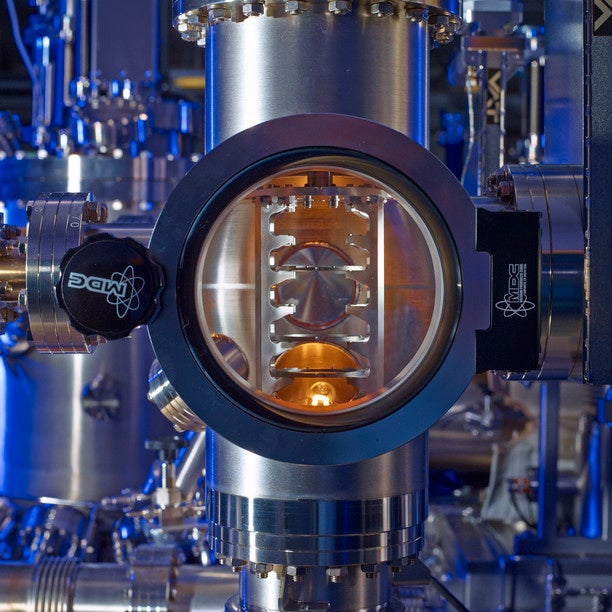
Engineering materials with unique quantum properties

Quantum materials require special equipment to build custom-designed and layered structures, such as the Ultra High Vacuum (UHV) cluster Deposition Lab (PDF) at the Institute for Quantum Computing.
Many technologies that we interact with today, including lasers and transistors, dont look terribly quantum from the outside. Quantum effects are essential to building and understanding these tools, but when we actually use them, the effects are invisible to the naked eye. This is similar to how many scientists and engineers imagine quantum materials, where small-scale quantum effects lead to large-scale changes in material properties.
Superconductors are one example of a quantum material. After cooling down some materials below a specific temperature, current flows through them with zero resistance, allowing for lossless power transmission and the expelling of magnetic field. The reason this happens, though, is a quantum mechanical oddity: electrons pair together and start exhibiting wave-like properties. We dont see the electrons directly, but from this microscopic effect, the material drastically changes its behaviour.
The impact of quantum materials
Engineering materials with unique quantum properties for the development of advanced quantum processors and devices is promising for:
- building the foundation of practical quantum devices
- high-capacity energy storage
- zero-loss electricity transportation.
Explore quantum materials in action
Historically, stone, iron and other metals have played a significant role in developing technology. Materials will once again be revolutionary in the quantum age. Read more about the investigation of quantum materials, including:
• How Na Young Kim, faculty member and principal investigator of the Quantum Innovation (QuIN) lab, has her sights set on scientific discovery
• How faculty member Adam Wei Tsen, who leads the Quantum Materials and Devices Lab, is in search of the next silicon
• What it takes to build multifunctional quantum devices (PDF)